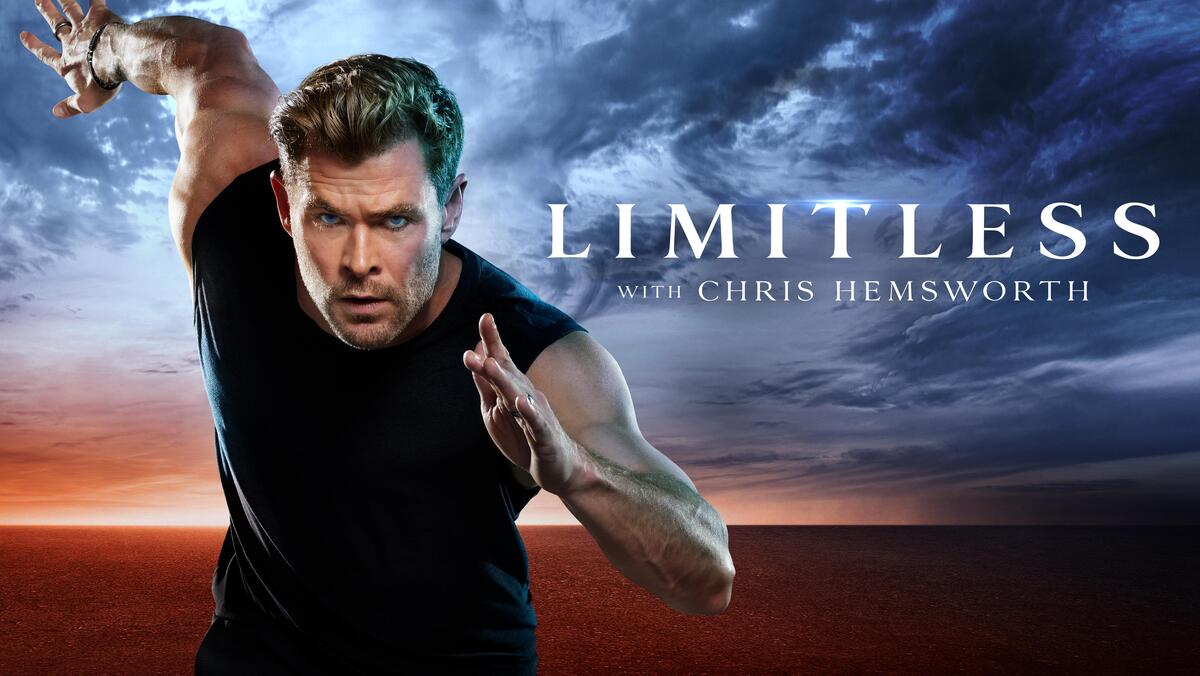Documentary Review: ‘Limitless’ explores experimental ways to prolong life
December 16, 2022
A brand new documentary, “Limitless” with actor Chris Hemsworth, was released on Nov. 16 on Disney+. Hemsworth discovers that age is catching up to him and there are a variety of things that are affecting how he is living life. Over the course of one year, Hemsworth will undergo six different tasks that will help him live a healthier and longer life. Each episode will display a new task Hemsworth will go through, with the help from a variety of specialists that will coach him to achieve the goal. These tasks will be completed all over the world with real life stories from people that have experienced difficult times and share what they have learned. This series consists of six episodes: “Stress-Proof,” “Shock,” “Fasting,” “Strength,” “Memory,” and “Acceptance.”
Episode 1: ‘Stress-Proof’
Hemsworth teams up with social psychologist Modupe Akinola, who examines stress on individuals. The main goal during this first episode is for Hemsworth to face his stress that is “unavoidable” in life. Akinola has Hemsworth face stress in three different ways, three days before the final task. In addition, stress-proof displays a variety of methods that Hemsworth can use to face stress and make it less noticeable in his everyday life. He gets the ability to experience new ways to fulfill his life longer and do more things that he wishes. This episode shows a great detail of ways stress can affect a person and even learning that fear plays a major role in it.
On day one, Hemsworth wears a connected shirt that allows Akinola to monitor his heart rate, blood pressure, and respiratory rate, while he does a virtual reality of his final task. The most interesting part about Hemsworth doing the virtual reality is how fear was his first response before stress. Akinola examines that his mind is affecting his body for the “fight or flight” response and she gives techniques on how to control his mind in a positive manner.
During this episode, the part that engrossed watchers the most is how after learning something big about what Hemsworth will be doing, it changes into getting a visual of what is actually happening inside the body. It is a unique perspective but also gives many opportunities to learn new things.
During day two, Hemsworth’s hands and legs are tied together as he jumps into a pool. He was given different tasks in the water, but the main goal was to control his breathing. Something to notice is how Hemsworth was quite calm entering the water and doing the first task, but as they got harder, his breath became short and the struggle became more intense. Thinking positively can flip the body’s response and then stress isn’t working against you. Hemsworth was able to do that and to see that his mind has much more power over his body. This happened because he gave himself encouragement, and everything in his body became more relaxed.
The final day before the ultimate task was fire and rescue. The goal was to use the box breathing technique while locating and putting out a fire, rescuing three mannequins, and having limited air to use. Hemsworth realized how much something can affect him and that was an overwhelming feeling. It is important to know when it is too much, but also a lesson on how to learn from it. When many emotions wash over Hemsworth, the producers give close up shots to show the intensity of what he was feeling. By doing this, it gives watchers a new perspective and gives a feeling as being there right with him experiencing all his emotions.
After three days of preparation, Hemsworth is ready to face the crane walk. The crane walk is a crane that is protruding out from a 900-foot Sydney skyscraper. For this, Akinola wants Hemsworth to walk across the crane calmly. In any situation, people will feel stressed, but using certain techniques will help calm the nerves that trigger stress and help them conquer their goals. Overall, the first episode instantly captured many viewers across the globe and it showed that even when someone is famous, they are undergoing the same struggles as any other person.
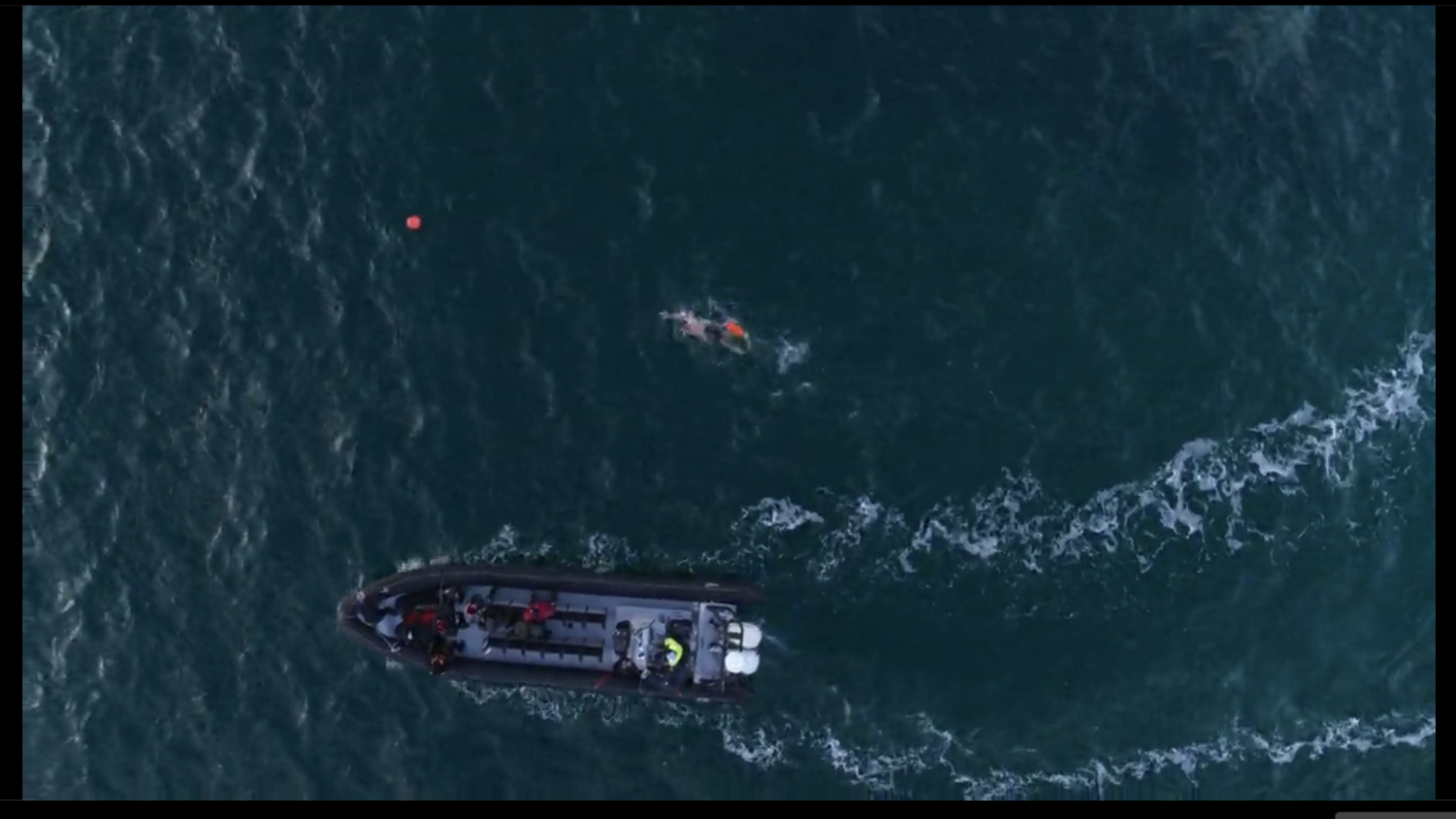
Screenshot taken by Maddy Kresal
This is the second episode in the new documentary. Hemsworth task is to expose his body to extreme temperatures.
Episode 2: ‘Shock’
In this episode, Hemsworth’s task is to face extreme temperatures with the help from sports scientist Ross Edgley. Over the course of three days, Edgley puts Hemsworth through three different tasks for him to be able to undergo the final task: the arctic swim. Edgley explains that when the body is faced with extreme temperatures, the body upgrades its defenses and will give Hemsworth a higher chance of living longer. Throughout the episode, more real life stories and experiences come out showing that putting the body in extreme temperatures can be used as different coping mechanisms. The most intriguing thing about this episode is how Hemsworth is never alone in any of the tasks he did. He always had someone doing it right along with and this really helped him analyze what was happening and what he can do to improve himself.
To start off, Edgley has Hemsworth jump right into 37 degree water for him to get the feel of what the cold is like and how his body will react. A change from the last episode is that Anikola was never the one to do the task with Hemsworth, but what to notice in this episode is Edgley is right along doing it with him. This shows how much more difficult shock is than stress-proof because it takes more than one person to achieve the goal. After exiting the water, Hemsworth explains that it was the hardest thing he has ever done. He feels that he is outside of his comfort zone more than ever. But even though this is something new, learning how to control his reactions to harsh temperatures like that will impact his health overall in a positive way.
On day two, Hemsworth was sent out into the water to surf, with three-time champion surfer Mike Fanning. Back in Hemsworth’s hometown of Australia, he had been surfing since he was 10, but surfing in these conditions in the Norwegian Arctic was completely different. He explains that this was a brutal experience because at first, he had a winning sensation going through him but soon, the cold took over and all the strength left his body.
As day three came around, the task was simple; be cold for as long as possible. Hemsworth was accompanied by his brothers and friends that were on the shock journey with him. This made him think less about the cold and more about the time he was getting to spend with all of them. The overall goal was to keep the muscles strong so they would not get weak and break the body’s resistance. Being exposed to such extreme temperatures made it easier for Hemsworth on day three to become more comfortable with it. As the show progressed, a group from Japan was up to a task to face a waterfall so cold it could cause heart failure. It is interesting to see the different ways people expose themselves to temperatures like that and for different reasons such as, the Japanese would have to stay under the waterfall until their master was satisfied. This relates to what Hemsworth is doing as this is another way individuals are putting their bodies up to new and difficult tasks.
On the day of the swim, the water temperature was at 36 degrees. Much of Hemsworth’s adrenaline kicked in during the beginning of the swim, where he just wanted to get it over with, but the cold once again took over his body and mind. The most captivating part is how Hemsworth was able to overcome the cold and push himself into positive thoughts and get through the swim despite being completely weak. The swim showed different perspectives of how he was handling the cold and what steps he took to push himself to the end. While it took a lot of concentration for Hemsworth, in the end, he was grateful for getting this opportunity to achieve these goals.
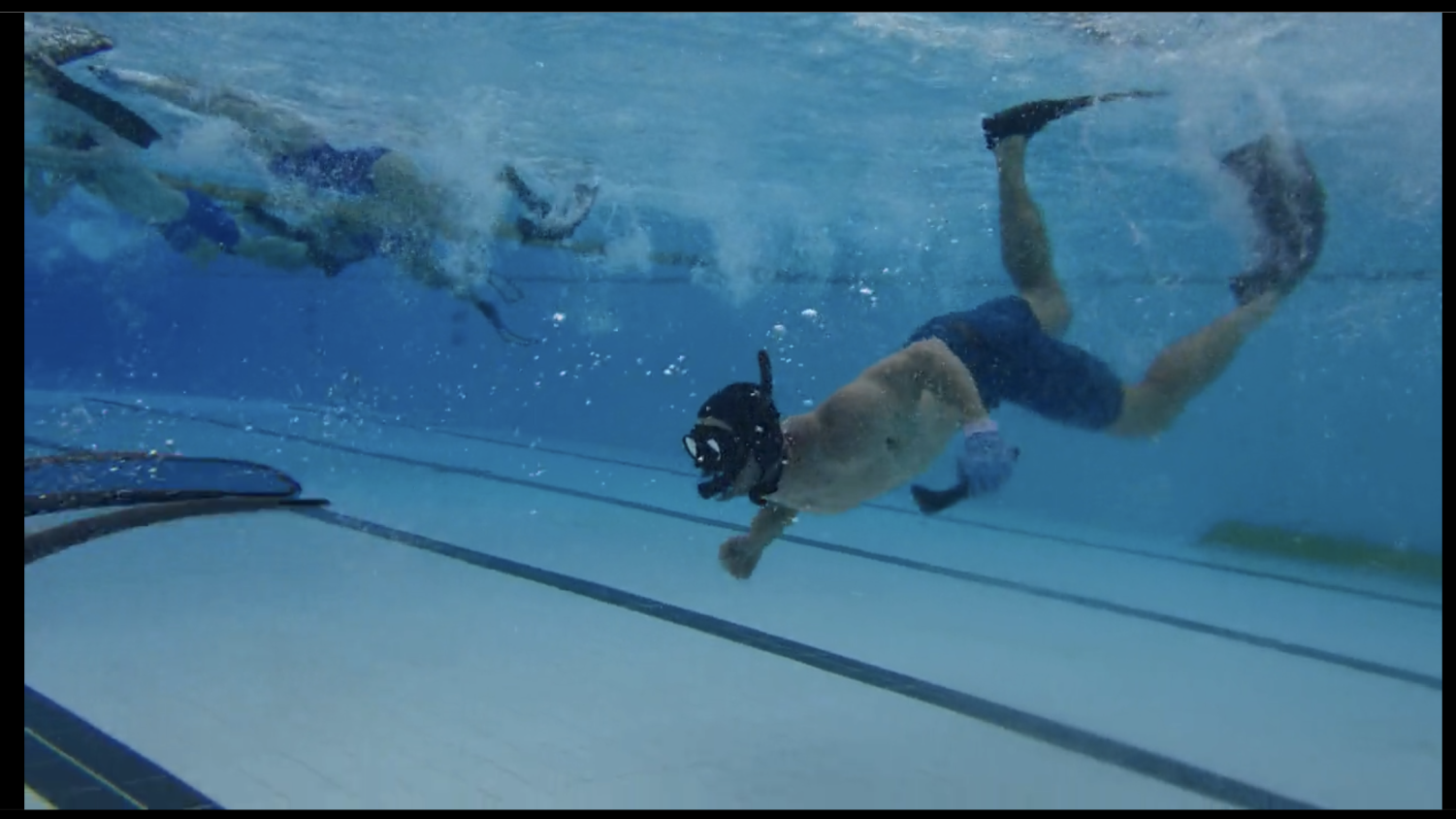
Screenshot taken by Maddy Kresal
This is the third episode in the new documentary. Hemsworth task is to go four days without food.
Episode 3: ‘Fasting’
As Hemsworth is an actor and has played many roles including: “Extraction,” “Spiderhead,” “Thor,” “Avengers: Endgame,” etc; he has always had to consume large amounts of food especially in his role of Thor, to maintain the right body physique. In this episode, Canadian-American Physician Peter Attia gives Hemsworth a water only diet for four consecutive days. The reason for doing four days is because the body will go through changes and reboot itself, explains Attia. Consequently, this episode focuses more on the body than the mind, even though the mind influences a major part of being hungry. As the show progresses, Attia and Hemsworth both go into much more detail as to what is happening to the body during those four days. Fasting concludes as one of the hardest tasks for Hemsworth considering all humans’ energy is produced from food. After the four days are over, Hemsworth will have to complete one more task: capture his own food.
Day one was the easiest day for Hemsworth because energy stored from the previous meal would help get him through the day. Talking and joking around came during the first 14 hours of no food and this had no effect on Hemsworth, but he would soon begin to feel the energy leaving his body as the day progressed. Friends of Hemsworth decided to fast alongside him to understand how the body feels when water is the only source. It is interesting to see that in every episode, there is always another person willing to experience what Hemsworth is undergoing and to understand that these tasks are not easy. To prepare for his final task, Hemsworth had to see how long he can hold his breath underwater as he will be diving and capturing fish. He was only able to hold his breath for 27 seconds even though Hemsworth explains that the time underwater felt much longer than what it actually was because by then, the hunger had set in and time began to slow down. At 24 hours, Hemsworth begins to feel the side effects of not eating: weakness and lightheadedness.
Waking up on day two, Hemsworth was struck with hunger immediately and he also noticed that he slept poorly and was tired throughout the day. Attia explains that the primary reserves of glucose stored in the liver and muscles are rapidly depleted which is causing Hemsworth to be tired. There are some people that will fast because they thrive off of feeling tired but it is also beneficial in the long run. The fat that is in the body turns into ketones that will keep the energy going and heightens sound and vision. Ketones are produced when the body isn’t making enough glucose and replaces it as the new energy source. At 39 hours, Attia checks the ketones in Hemsworth’s body by pricking his finger to see what level he is at and this leads into the next task, underwater hockey. The ultimate goal was to take Hemsworth’s mind off of food and hockey would help with that. What is most efficient about hockey is it gives Hemsworth the opportunity for bursts of energy and to prepare being deeper into the water for longer periods of time. The most noticeable part was how Hemsworth was able to stay under the water longer. This is because of the fact that he was distracted by the game and thinking less about the actual reason he was in the water. When going back in for the second round, Hemsworth was given the burst of energy kicked in from the ketones and this helped tremendously as he was able to stay under even longer and feel calmer. The 45-hour mark came around, and the friends that were alongside Hemsworth decided that they were too hungry and dropped out. Understanding why Hemsworth was doing this came easily for everyone, but no one else could follow through and this is where the mind takes over. The reasoning behind this is that food is the main source of energy and his friends could not stand the thought of continuing this journey without it.
On day three, Hemsworth grows weaker, feels terrible, loses sleep, hard to catch his breath, and unable to focus. Even though Hemsworth feels completely weak, he continues to do his everyday activities including working out. At this point, he has gone 64 hours without food. He gave himself hope that doing activities to increase his heart rate would make the ketones kick in, but he realizes that nothing is working. What is most interesting about these episodes is when they bring in real life events to show the different reasons why people do this. For example, a family that lives in Ethiopia travels to attend church that takes three days on foot and during this time, they will not consume any food because they believe it brings them closer to God.
Even though each person is fasting for a different reason, there is still that main thought of fasting being an essential part of life and that it is healthier for the body and mind. Attia believes that since fewer calories are being consumed, there is a better chance at living longer even as the body becomes weak. Hemsworth is now at 70 hours without food and all his energy is completely drained as he is extremely tired and the ketones are no longer kicking in.
The final day arrives and Hemsworth is at 92 hours without food. The risk of blacking out was very possible, and it was important to keep an eye on his health. His ketone level was at a two meaning, his body was not able to produce any ketones, but there was a chance that if his body could get up to three, the ketones could kick in. At this stage, his body is trying to fight off “zombie cells” and replace them with new, healthy cells. Zombie cells are cells that die from damage or too much stress but they refuse to leave the body. For the final task, Hemsworth gets into the water in the search for food. As he enters the water the first time, Hemsworth explains how he felt unfocused and unable to breath. Viewers can see the determination in Hemsworth as he goes back under for a second time. In every episode so far, something to notice is how he is able to overcome the fear in his head and always accomplish the task the second time. Therefore, Hemsworth adds the different tasks into his everyday life and illustrates that this will be even more beneficial for his health.
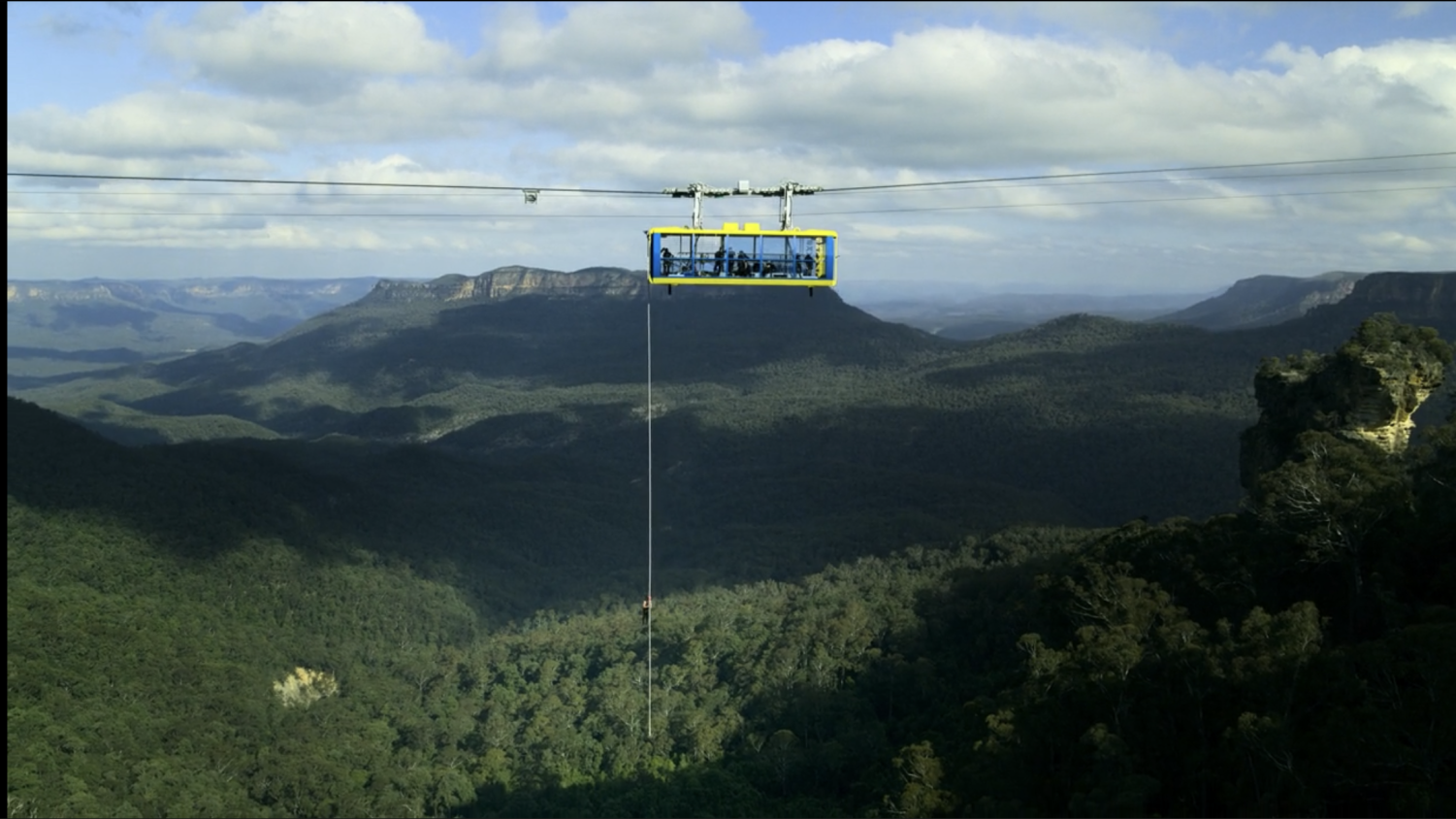
Screenshot taken by Maddy Kresal
This is the fourth episode in the new documentary. Hemsworth’s task is to train over the course of three months to prepare for a rope climb.
Episode 4: ‘Strength’
This episode has a different way of accomplishing the fourth task of living a healthier and longer life. Hemsworth has to complete a rope climb of 100 feet that hangs over the mountains in Australia. In preparation for the climb, it will take Hemsworth three months of training with sports scientist Ross Edgley. The main focus over the next three months is to target a wider range of muscles and not just the major ones. The preparation was quite basic considering that the body has to use all muscles to climb a rope and, overall, this episode was tedious and repetitive.
Gaining more muscle mass is a long journey and that is what sets this episode apart from the rest as it is no longer a four-day process. To start off, Hemsworth takes a pretest to show areas in his body that are lacking the requirements needed to rope climb. Canadian-American Physician Peter Attia explains that although Hemsworth looks in shape, the results show it is not the same for his body internally. Stamina allows the body to keep energy flowing for prolonged periods of time, but unfortunately, the results showed Hemsworth was lacking stamina. Another thing that is needed most to slow the aging process is the mitochondria. In a diagram that is shown, Hemsworth narrates along to explain why the mitochondria are so important. In the muscles, there are tiny power plants that provide energy to the body to keep things running smoothly. As people age, the mitochondria begin to malfunction and break down, accelerating the aging process. To help the mitochondria replenish, endurance exercises can help push back the aging.
Hemsworth has to start from the beginning in order to access the smaller muscles in the body that are required. Ten weeks before the climb, he has to learn the proper form and techniques that will provide an advantage for him to achieve this task. Viewers will see the struggles Hemsworth has and the self-doubt that begins to show because he has only gone a few meters up and feels the fatigue. Despite his doubtfulness, Hemsworth knows that his body needs improvement, and the only way to do that is to keep training. The determination sparks interest in Edgley as he is able to then push Hemsworth harder during workouts. Over the course of the next couple weeks, Hemsworth continues to do daily workouts along with adding length to the rope to see how far he has come since the beginning. It is interesting to see how bringing in different experts to help Hemsworth is helping him target a variety of muscles in his body just to maintain the proper body physique needed. While Hemsworth has a larger body mass, this gives him a disadvantage because that is more weight required to pull up on the ropes, but he also is required to take in the proper amount of nutrition to help gain 40 pounds of muscle. The most confusing aspect of that is how the weight is a disadvantage but gaining the muscle that makes him heavier is what is needed.
How a person physically looks on the outside does not necessarily match what is on the inside, and vice versa. A man named Norman, who was in his 60s, found his son’s bicycle in the garage and decided to cycle around his neighborhood. He found that he loved cycling and each day he went further and further until he joined a cycling group for elderly people. Norman appeared to be skinny and pale, just like any other person when they begin to age, but he also noticed that diseases and other sorts were not affecting this group of men. Test results showed that the group of men had an immune system just like people in their 20s, and now at the age of 85, Norman continues to ride his bike. This relates to how Hemsworth is a bulky, strong man, but is lacking stamina internally while Norman looks weak on the outside, but is healthy on the inside.
There are four weeks until the rope climb, so the group helping Hemsworth sets up 80 feet of rope to see how far his training has come. The beginning was very easy and Hemsworth was able to get up about halfway when the lactic acid and fatigue kicked in. At that point, he gave up, but viewers can see how defeated and disappointed he felt in himself, so that gave him more motivation to keep training. During the one week that is left, Hemsworth hurts his ankle and is concerned because that is the foot he anchors the rope with. Attia makes the decision to push back the climb and keep training even though this will have a greater disadvantage on Hemsworth. Hemsworth also needs to face one more task before the climb and that is his role in Thor. He has to gain weight and then drop some of it after, and while directors are showing preparation for Thor, viewers can see the stress in Hemsworth.
As the day of the climb arrives, Attia explains that this is no longer a controlled environment and it is the real test. All the emotions Hemsworth was shoving down, have risen to the surface and have overtaken control of his body. Ultimately, Hemsworth knew the longer he waited to begin, the more emotions and fatigue would kick in. The entire climb Hemsworth gave himself doubtful thoughts and this made the rope, distance, everything, more difficult. In each episode, viewers can see that he always doubts himself and that is why he stops halfway through. In Hemsworth’s mind, he thought giving himself a quick break would help relax his muscles, but Attia explains that stopping is the worst thing to do because even though the body feels like it is resting, it is just the fatigue taking over the body. In the end, Hemsworth returns his thoughts to a positive mindset and it shows as he pushes his way through to the top. Despite the pain his body felt, the smile on his face gives priceless reaction from everyone around him and even surprises himself knowing he was able to achieve another task.
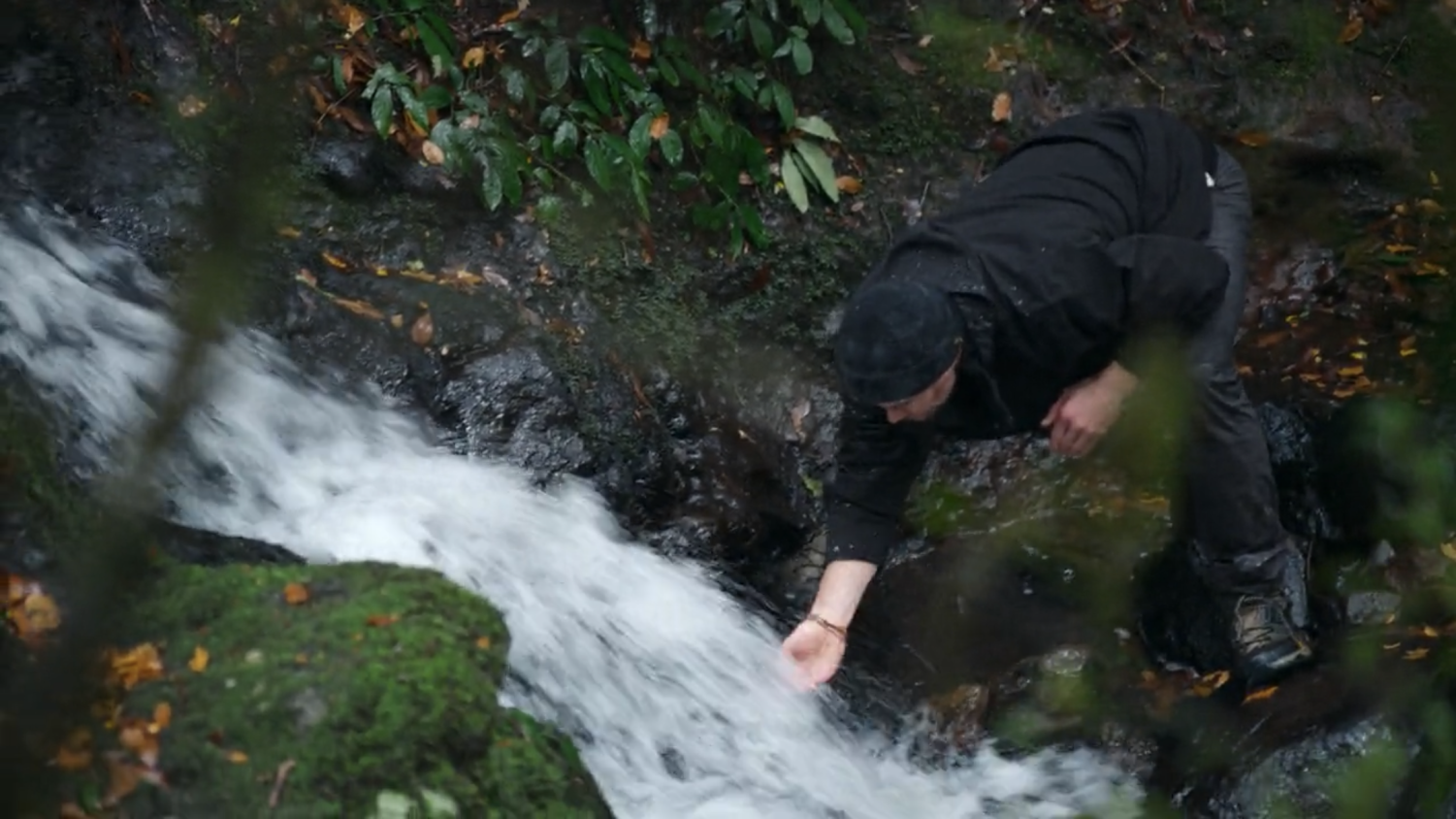
This is the fifth episode in the new documentary. Hemsworth’s task is to improve his memory.
Episode 5: ‘Memory’
During this episode of the documentary, Hemsworth takes on the memory task differently than the tasks in previous episodes. Usually, the days are planned out and Hemsworth is told how many days he has to complete it, but in his newest task, there are no number of days. Hemsworth is pushed to complete the challenge of hiking thousands of acres in the wilderness hoping to make his brain stronger. As every other episode is packed with lots of energy, this episode is calm and less physical.
In the beginning, Canadian-American Physician Peter Attia, had tested Hemsworth to see the healthiness of his brain and body. Unfortunately, the test results showed that Hemsworth is eight to ten times more likely to be diagnosed with Alzheimer’s disease. Hemsworth has copies of APOE4 (a set from each of his parents) that increases the risk of having this disease. After learning this information, Hemsworth fears that his memories with his wife and kids will slowly fade away, and this task becomes one of the most important ones he has done. While Hemsworth appears fearful of learning about Alzheimer’s, Attia says that this gene is a blessing because it will give Hemsworth motivation to work towards slowing down the process since he is younger and this disease does not occur until later in life.
Neurologist Sharon Sha completes a frontal lobe test with Hemsworth that will show his voluntary movement, expressive language, and higher skill levels. Sha explains that when a person hits the age of 30, the brain will start to deteriorate causing atrophy, dementia and other diseases. In Hemsworth’s situation, he made the decision to find any way possible that will reduce the process of Alzheimer’s. Although a person can eat properly and work out regularly, it does not mean it is actually helping the brain.
Sha sets up Hemsworth with a friend, Otis Hope Carey, who will navigate Hemsworth through the wilderness but also teach him to use his surroundings instead of technology. Carey is a part of a tribe that believes in the goodness of nature and he expresses that through sculptures and paintings that symbolize cultures and the bringing of communities together. In order to keep Hemsworth’s brain healthy, he and Carey use objects in the woods to help remember which direction to go in as Sha made the rule of no phones. Using surrounding objects will improve memory and build a stronger brain. In the wilderness, senses are heightened and sights and sounds are easier to process because the body becomes relaxed, releasing stress build-up. It is important that Hemsworth and Carey do his hike together because interacting with others is healthy and also because spending time alone leaves a person with a 50% chance higher for developing dementia.
The hike took more than one day for Hemsworth and Carey, so they had to find land to camp overnight and this was the biggest challenge they faced. In order to find the ground they wanted to camp on, Hemsworth and Carey had to jump into a waterfall and swim across to reach their destination as there was no other way down.
After all the navigating Hemsworth has done by only using his brain, he found that the water cleared his mind. Although his mind is cleared going into a good night’s sleep, Hemsworth explains that sleeping is a struggle because many thoughts are still going through his head and he repeats situations over and over, trying to pick at something he has done wrong. Ultimately, viewers can relate most to this because usually sleep is the time when our brain and body shut down to feel refreshed, yet this is when people’s thoughts keep them up at night the most. Getting enough sleep has a variety of benefits including the brain being healed while sleeping and this is one of the most important factors in reducing the risk of Alzheimer’s.
On day two of the hike, Hemsworth and Carey reach their final destination at a spot called the Wrights Outlook that is located on top of a mountain. One of the benefits of the outlook is that Hemsworth and Carey will have to climb the side of the mountain and this will encourage the neurons to grow and stay healthy. The outlook is a special meeting place where nations come together to connect, feel powerful and spiritually recharge. In order to let in these feelings, the three nations are gathered to do a dance called the Corroboree and the people apply white paint to the whole body. Applying paint gives the people a sense of belonging, empoweredness and an understanding of the ancestors speaking of the earth.
Hemsworth explains that being in touch with nature has given him a different perspective on how to live life as he understands his risk of developing Alzheimer’s. He wants to live a happier and more rewarding life just like his grandfather (diagnosed with Alzheimer’s) did and hopes to continue holding onto his memories. Overall, this episode was the shortest, but viewers received much more detail in how the brain functions and an understanding of how powerful nature can be.
